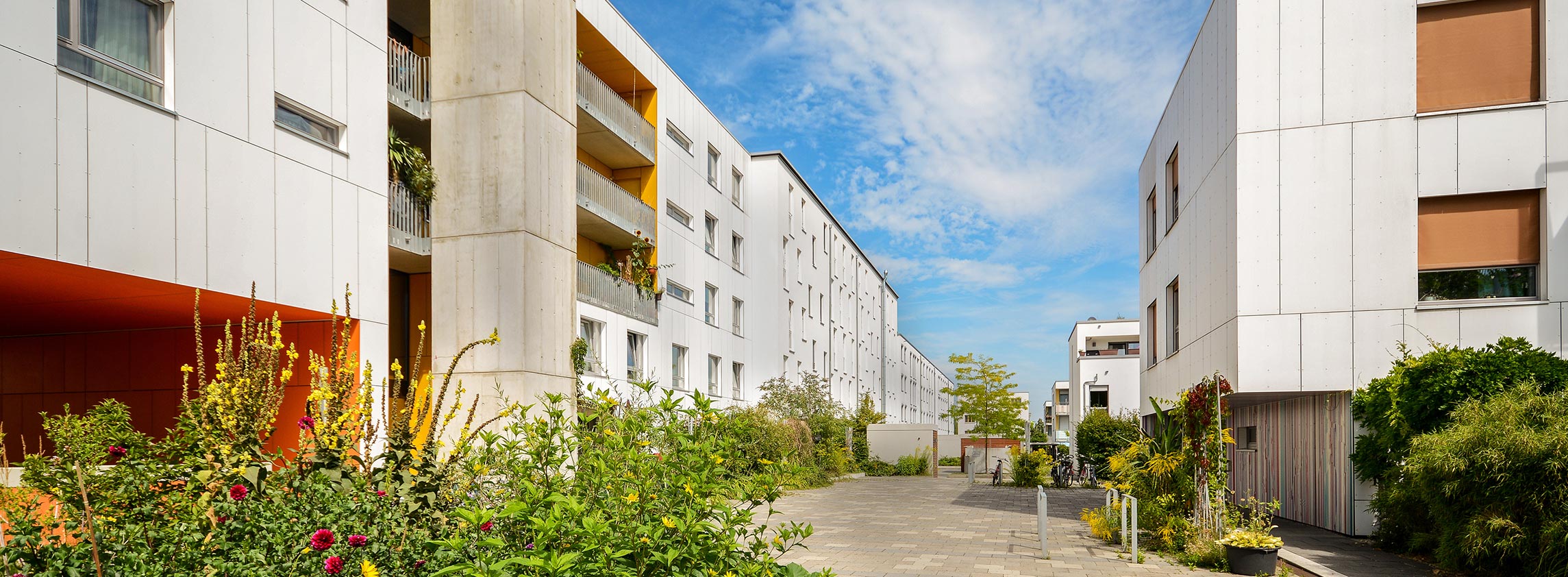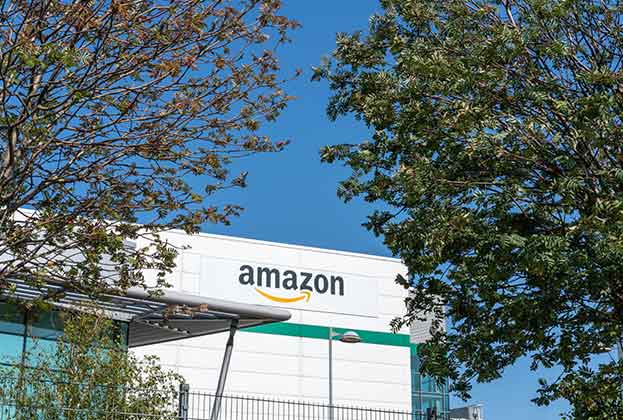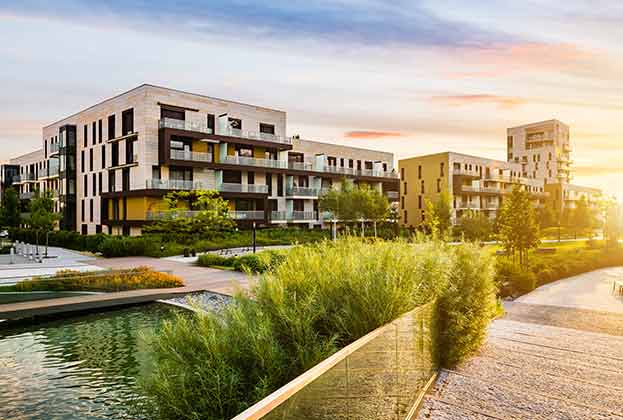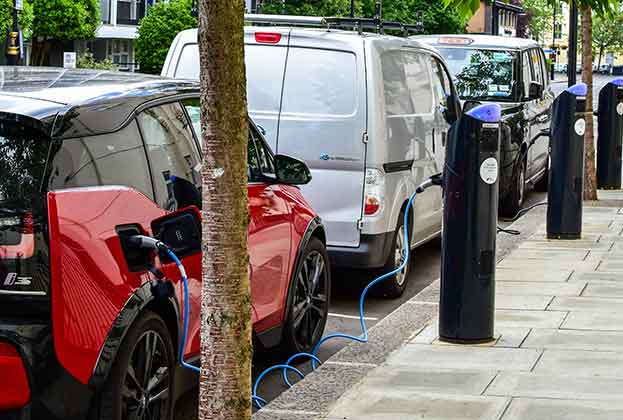Local plans on new developments and the built environment are playing a key role in ensuring the UK’s commitment to achieve net zero by 2050 is met
The planning system has the potential to play a crucial role in the effort to decarbonise the built environment. It is the mechanism through which the spatial and transport aspects of decarbonisation can be addressed, and regulates the standards new developments must be delivered to. Local plans are now legally required to contain policies that are aligned with the commitments of the Climate Change Act 2008 to reduce emissions and achieve net zero by 2050.
Since 2018, around 75% of local authorities have declared a climate emergency and many have proposed earlier target dates than 2050 to reach net zero. Nottingham has one of the most ambitious carbon reduction targets, aiming for the city to be carbon neutral by 2028, requiring a 22.8% reduction in emissions every year from current levels. However, these ambitions are yet to filter through to specific requirements in the local plan.
It is unclear yet how these climate commitments might shape the planning system, but the National Planning Policy Framework already sets out the goal of 'contributing to the achievement of sustainable development' and plan policies must include an assessment of the potential for local policy to achieve local emissions reductions over the plan period.
This gives the planning system economic, social and environmental objectives to create places that protect and enhance the environment. Planning can deliver these objectives by ensuring that new development supports sustainable settlement patterns, aligns with economic growth, and makes best use of existing public transport infrastructure.
Zero carbon standards
One key area of carbon reduction that may emerge in local plans is a defined low or zero carbon requirement for new developments. This could cover many areas including specifying a building’s operational energy use, limiting the emissions involved in the construction of a development, requiring clean energy sources for the scheme, or establishing an offsetting scheme for developments unable to achieve zero carbon onsite.
For example, Reading’s adopted local plan includes policies requiring new buildings to be orientated to maximise the opportunities for both natural heating and ventilation; and for new and existing buildings to demonstrate how they have been designed to maximise resistance to climate change, for example by including measures such as solar shading, thermal mass heating and ventilation of the building, reducing the energy required for the day-to-day running of the building. All new-build housing is required to reach at least a 19% improvement in the dwelling emission rate over the target emission rate, as defined in the 2013 Building Regulations. Where this cannot be achieved on site, an offset may be possible through planning contributions. Advancing on some aspects of the Reading policies, the Oxford local plan adopted in 2020 states that planning permission will only be granted for new-build houses and other forms of development if they achieve at least a 40% reduction in carbon emissions from the 2013 Building Regulations. The requirement will increase from 31 March 2026 to at least a 50% reduction in carbon emissions.
Local plans are, therefore, requiring developers to push beyond national Building Regulation standards and so are a key policy driver for change. Evidently, this will place increased demands on developers and in lower-value areas could limit the potential for other forms of developer contributions to be delivered. For local plans to become an effective mechanism for delivering carbon reductions, policies need to be established that meet the current tests of 'soundness' and be underpinned by viability assessments to ensure that the demands placed on developers don’t adversely impact much-needed delivery across all markets.
Spatial strategy
Local plans also govern the spatial pattern of new development and in doing so can help limit transport emissions by encouraging growth in locations that are accessible by sustainable forms of travel, including public transport.
Our research shows that hitherto the planning system has not been acting to locate new development in the most sustainable locations. Between 2015 and 2019, less than 50% of homes gaining full consent were within a one-mile radius of a train or underground station and 6% were over five miles from a station. This type of development is likely to encourage private car use, particularly if the development does not include retail or leisure amenities. To combat this, masterplanning strategies may instead shift to embracing the concept of the '15-minute city', which moves away from a zoned planning approach to creating neighbourhoods where residents can live, work and reach recreation facilities within a short walk or cycle.
In order to be sustainable, sites gaining consent at a greater distance from existing settlements need to be large enough to support local facilities and thereby reduce the need for travel. Our research shows that instead, these remote schemes are more likely to be smaller, with 75% of sites gaining full consent over five miles from an existing train station having capacity for fewer than 100 homes. Similarly, over half of sites achieving consent over one mile from an existing urban settlement had capacity for fewer than 50 homes. These are likely to be locations where it is challenging to provide frequent public transport. Department for Transport data shows that those living in rural villages or hamlets travelled on average three times as many miles per year by private car as those living in urban locations.
Recent changes at the national level might be about to turn the tide back towards more housing in urban areas. The government’s Standard Method for setting housing targets introduced in 2020 has introduced a 35% uplift to the housing need figure in the 20 largest cities and towns in England. Part of the rationale for this is to maximise access to existing infrastructure such as public transport and local facilities such as schools, GPs and shops. It remains to be seen how effective this new approach is going to be on changing the pattern of delivery while still aiming to push numbers higher up to the target of 300,000 homes per year.
Read the other articles within Spotlight: Property and Carbon – April 2021 below









